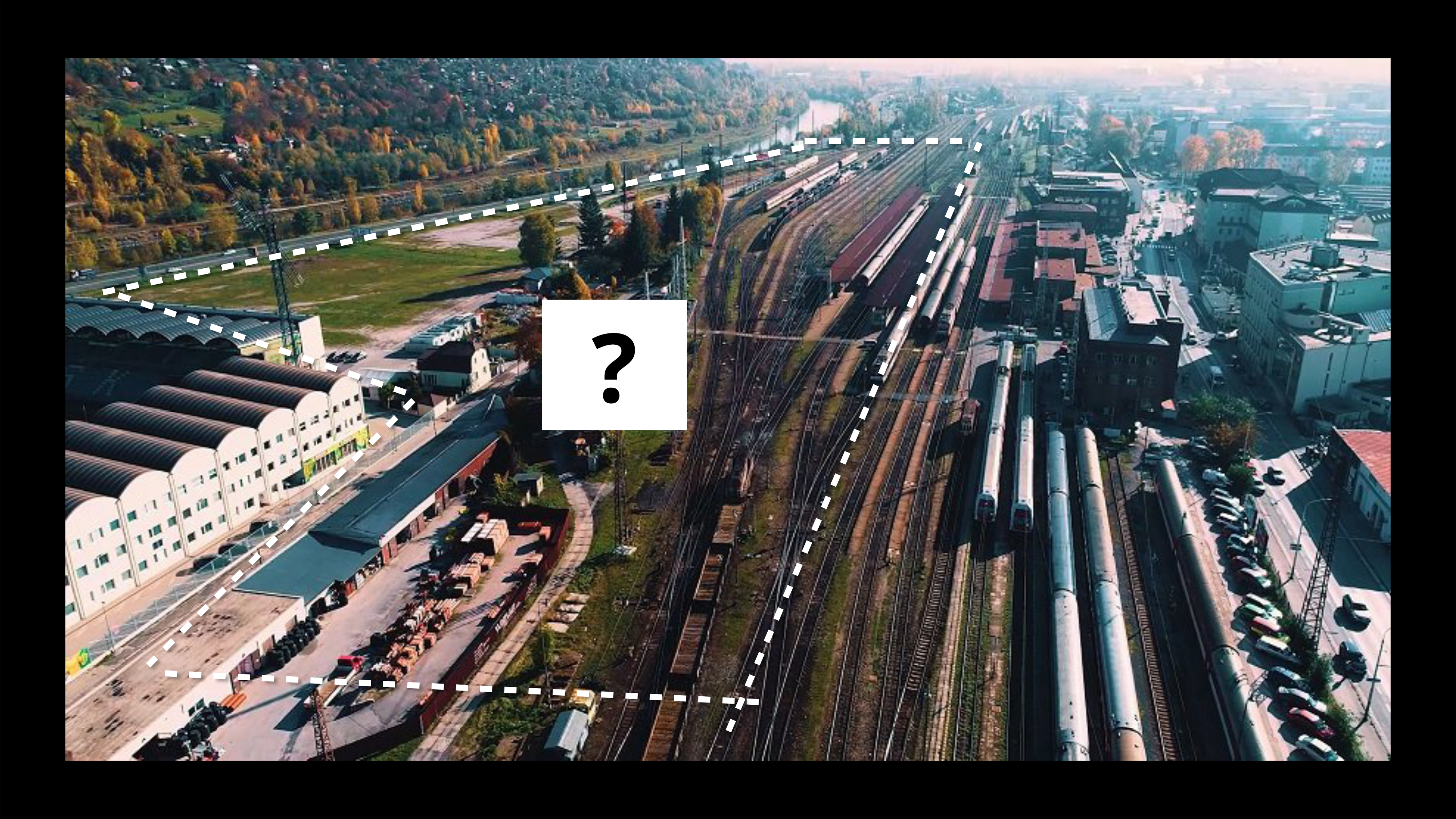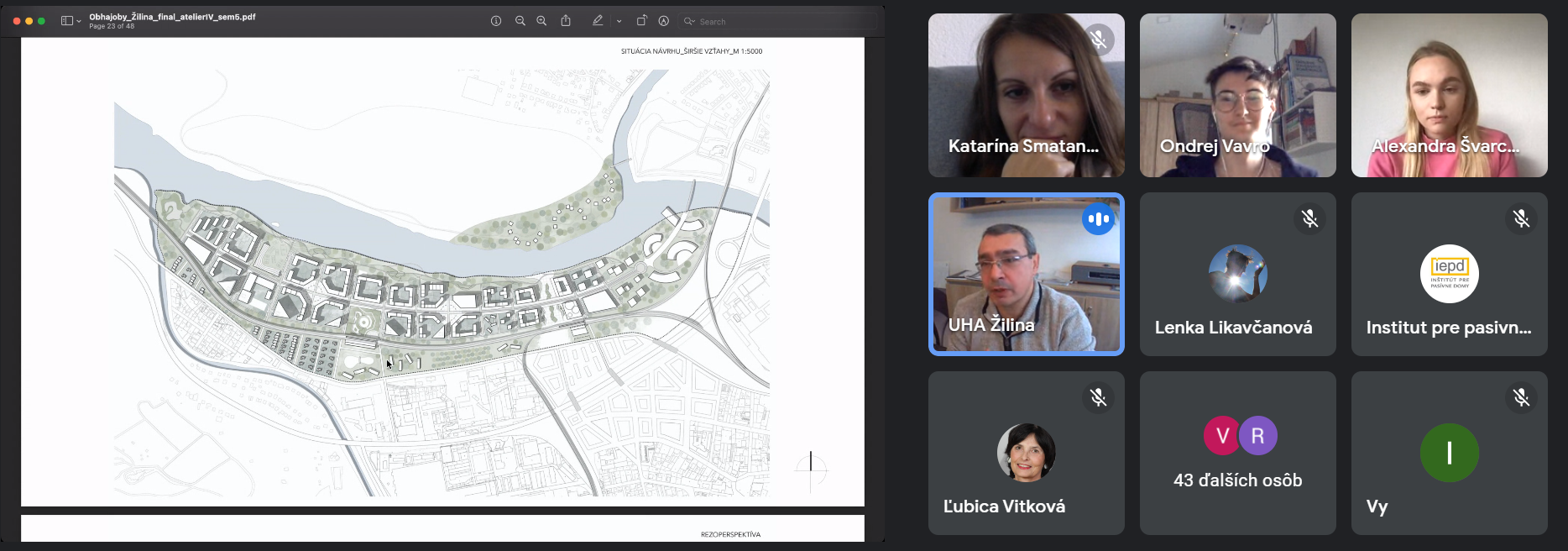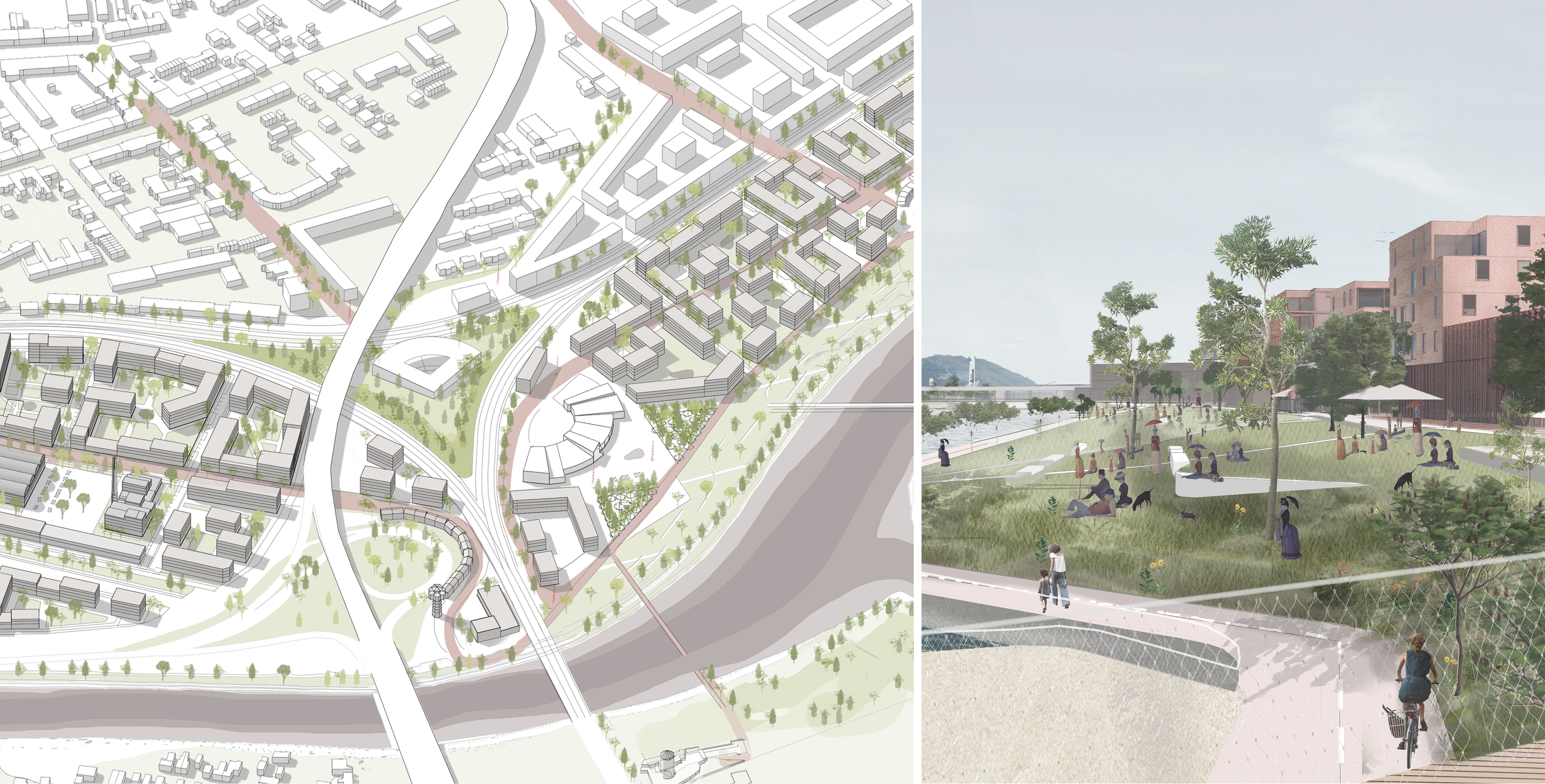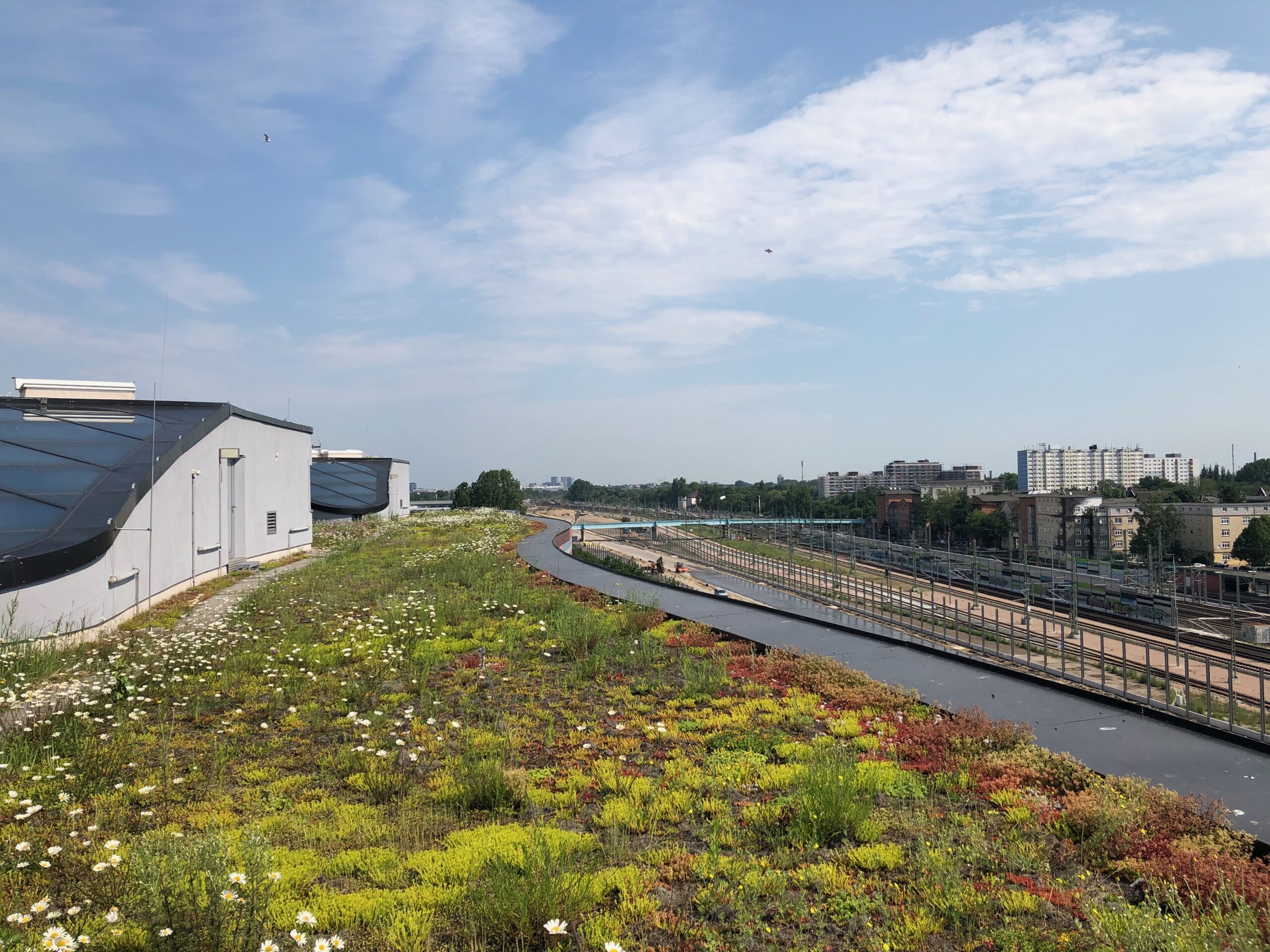As part of the ClimArchiNet project, we organized a workshop for architecture students, which took place on October 27, 2021 in cooperation with the Faculty of Architecture of Slovak university of technology in Bratislava. The subject we participated in was „Design studio of Urban planning“. The student assignment was to design a transformation of a brownfield area in Žilina, a county town in northern Slovakia.
Further Information

The brownfield is located North of the city center, it is an area of unused railway tracks, which are in contact with the river Váh, which makes it an attractive location with great potential to connect the city center with the river. This assignment was created in cooperation with the Department of the Chief Architect of the City of Žilina, Rudolf Chodelka. The results of student work will form the basis for the elaboration of the new city zoning plan. The city of Žilina is one of the cities with the worst air quality in our country. From the perspective of application of climate solutions, Žilina is in desperate need for a new vision, because of its worsening problems with traffic and industrial pollution and also the lack of housing and other issues.
Main assignment questions were:
What is the potential of the space that will be released along the track – between the city and the water?
How can you “recycle” areas in a city?
What values are important to you in creating our environment?
How would you like to live in 2050?
Where should the city of the future go?
Workshop
During the workshop, expert speakers from the Climarchinet project presented experiences to students and were addressed with questions. Martin Stohl had a presentation Carbon-neutral districts and urban planning, presentation of Andrea Borská was on the Example of good practice – Seestadt Aspern in Vienna in Austria and Juraj Zamkovský was presenting a topic of Regional Energy Centers and renewable energy in Slovakia.
A few weeks after the workshop, during the design process, the experts were consulting with students, addressing their questions and concerns about the design. During the semester, students studied environmental concepts and this was evident in the designs.

The final presentation
We had the opportunity to be at the final presentation, which took place on January 12, 2022, to see and comment on the great results of their work. The chief architect of the city of Žilina also participated, and together with lecturers we saw what a great difference it makes, when students are led to think about the climate solutions from the early stage of design. Their designs were proposing pedestrian zones, energy efficiency, green areas and roofs, renewable energy, sustainability, inclusion, community gardens, refurbishment of old buildings to housing or cultural functions etc. It is excellent that it was possible to create such a connection of practice, academy and experts from NGOs and business. We hope that these visions of sustainable urban development will be incorporated as a zoning plan and that we will eventually see these ideas as real projects. These students are the architects of the future, therefore we should listen to their concerns and understand their different views, their approach and values.

Students had an additional opportunity to participate in finding visions and concrete solutions. Their task was to write a short essay with illustrations on the topic “City vision 2050 – the role of architecture”. We evaluated their essays together with ClimArchiNet experts. As a reward, the authors of the three most inspirational essays will take part in an excursion of sustainable architecture in Austria. Together we will visit buildings exceptional not only in their architecture but also in technical solutions and innovation.
We would like to thank prof. Ľubica Vitková and doc. Katarína Smatanová for great cooperation on this student adventure.

